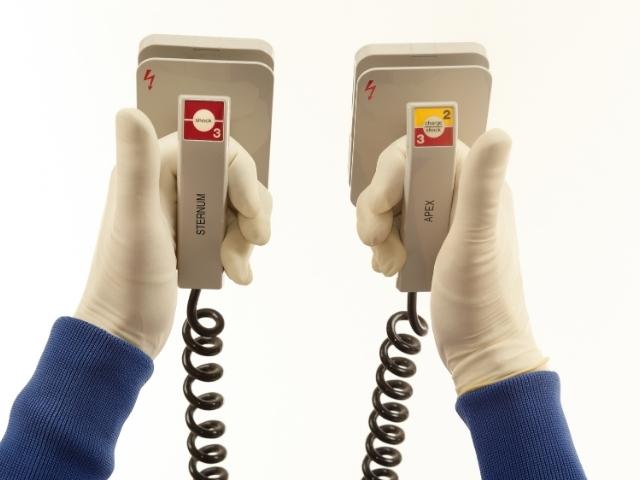- 374-C, Amrapali Circle, Vaishali Nagar, Jaipur
Supraventricular Tachycardia
Supraventricular Tachycardia
Supraventricular tachycardia (SVT) is a medical condition characterized by an abnormally fast heartbeat affecting the upper chambers of the heart. In normal circumstances, the heart beats 60-100 times per minute, whereas in SVT, the heart may beat more than 100 times per minute (approximately 150-200 times). Although SVT is not usually considered a serious condition, some people may require treatment to manage the symptoms. Lifestyle modifications and medications may help to reduce the rapid heartbeats, and in most cases, these interventions are sufficient to control the condition.


Types of Supraventricular Tachycardia
Supraventricular tachycardia (SVT) is an irregularly fast heartbeat that affects the upper chambers of the heart. It occurs when the heart beats more than 100 times a minute. While some cases of SVT may not need treatment, lifestyle changes and medications can help reduce rapid heartbeats. The three common types of SVT include atrioventricular nodal reentrant tachycardia (AVNRT), atrioventricular reciprocating tachycardia (AVRT), and atrial tachycardia. AVNRT is the most common type and is caused by an extra pathway called the reentrant circuit located near the atrioventricular node. AVRT is a rhythm problem caused by an extra connection between the upper and lower chambers, and it commonly occurs in children or teenagers. Atrial tachycardia is a faster heartbeat that commonly occurs in people with heart disease, heart surgery, or pregnancy. It can also be triggered by infections, medications, or alcohol.
Supraventricular Tachycardia Symptoms
Supraventricular tachycardia (SVT) is a condition where the heart suddenly beats faster than normal. Its symptoms include rapid heartbeat for several minutes, pounding in the chest, weakness, tiredness, dizziness, shortness of breath, sweating, and fatigue. It is challenging to identify symptoms in young children, but they may include sweating, poor food intake, rapid pulse, or pale skin. Although SVT is not life-threatening, an episode can cause cardiac arrest or unconsciousness in people with heart problems. It is essential to consult a doctor if the episode lasts for an extended period or if the patient experiences any of the given symptoms.
Supraventricular Tachycardia Causes
When the electrical system of the heart malfunctions, it can cause Supraventricular tachycardia (SVT), which is characterized by a sudden increase in heart rate. Some of the triggers that may lead to SVT episodes include exercise, stress, and lack of sleep. In addition to these, there are several other factors that may cause SVT episodes, such as heart disease, heart failure, other heart problems like Wolff Parkinson White syndrome, excessive alcohol intake, smoking, drug abuse, chronic lung disease, pregnancy, and certain medications.
Diagnosis of Supraventricular Tachycardia
Supraventricular tachycardia is diagnosed by a physical exam, review of symptoms, and medical history, as well as several diagnostic tests. These include an electrocardiogram, which records the heart's electrical activity and measures the timing and duration of each phase of the heartbeat, blood tests to check for underlying health conditions such as thyroid disease, a Holter monitor, which is a portable ECG device that records heart activity throughout the day, an echocardiogram, which uses sound waves to create an image of the heart and its valves in motion, a loop recorder, which is a device implanted under the skin to detect irregular heart rhythms, an exercise stress test to monitor heart activity during physical activity, an electrophysiological study, which involves inserting a flexible tube with sensors into the heart to record its electrical patterns, and a tilt table test, which checks how the heart and nervous system respond to a sudden change in angle and is used when a person has experienced fainting.
Supraventricular Tachycardia Treatment
Supraventricular tachycardia may not require treatment if the episodes last only a few minutes and can be easily controlled. However, if treatment is needed, the most common options include medication, catheter ablation, carotid sinus massage, pacemaker implantation, and cardioversion. Medications can be taken orally or injected intravenously to control episodes. Catheter ablation is a permanent treatment in which thin tubes are inserted through a vein into the heart to correct the electrical system problem that causes supraventricular tachycardia. Carotid sinus massage involves applying gentle pressure to the neck to release chemicals that slow down the heartbeat. Pacemakers are small implantable devices that stimulate the heart to beat at a normal rate, while cardioversion involves giving small electric shocks to the heart to restore normal rhythm.
Complications of Supraventricular Tachycardia
Untreated frequent episodes of supraventricular tachycardia can potentially harm the heart and lead to heart failure or other heart-related complications.
Supraventricular Tachycardia Risk factors
Supraventricular tachycardia is prevalent among infants, children, and young adults, and its risk may increase due to various factors, such as age, thyroid disease, sleep apnea, and drug abuse. Certain types of supraventricular tachycardia are more common in children, young adults, and middle-aged individuals. Additionally, an overactive or underactive thyroid gland, also known as thyroid disease, can increase the risk of supraventricular tachycardia. Obstructive sleep apnea, a condition characterized by interrupted breathing during sleep, is another factor that can heighten the risk of supraventricular tachycardia. Furthermore, the abuse of illegal drugs like cocaine or amphetamines can trigger an episode of supraventricular tachycardia.
Prevention of Supraventricular Tachycardia
Controlling or preventing an episode of supraventricular tachycardia can be achieved by avoiding the triggers associated with it. By taking some precautionary measures, the chances of having episodes can be reduced. These include limiting the intake of caffeine and alcohol, quitting smoking, getting enough rest and sleep, monitoring the use of medications, and exercising regularly.
Prognosis or Outlook for Patients
By taking a few precautions, a person with supraventricular tachycardia can lead a normal life. The condition is typically easily curable and does not typically lead to major health issues. It's important to note that experiencing supraventricular tachycardia after significant exercise or physical activity is normal and doesn't usually require any treatment. However, if the condition lasts longer than normal, it may cause problems and should be addressed.
